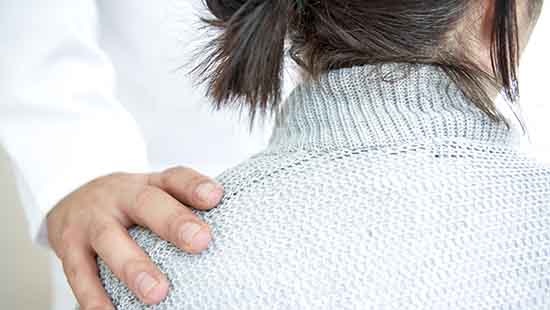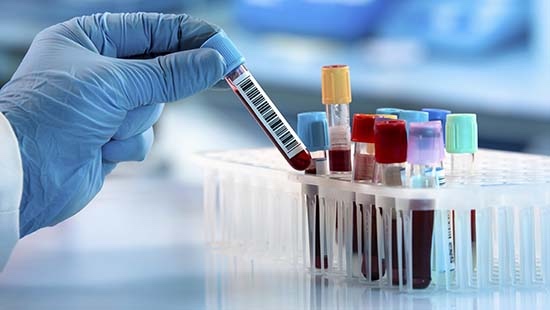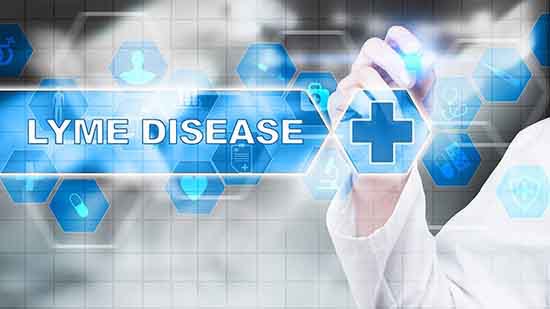Treating chronic diseases effectively
Chronic diseases usually develop slowly – they persist for months, years or even a lifetime. They remain undiscovered for a long time until the quality of life deteriorates rapidly. Patients with chronic diseases often have a long history of suffering behind them, have consulted several doctors and often do not know what is “wrong” with them. At Arcadia Praxisklinik we have experience in the diagnosis and therapy of chronic diseases: This enables us to treat effectively and support our patients in adapting to a health-promoting lifestyle.
Integrative medicine helps with chronic diseases

Many chronic illnesses can be effectively treated with integrative medicine and allow for a good quality of life, even with the disease. Among these diseases are allergies, chronic inflammatory or autoimmune diseases such as Crohn’s disease or ulcerative colitis, chronic fatigue syndrome, but also Lyme disease. At Arcadia Praxisklinik we have been successfully treating these chronic diseases for years with our holistic, integrative medical procedures.
Our treatment results confirm our holistic approach!
The right diagnosis: What does ‘chronically ill’ mean?

Our goal is to “take the disease by the roots”, by uncovering the causes and then eliminating them. Chronic centers of inflammation in the oral-jaw area, microbiome disorders, possible toxic loads or even chronic stress are often the “root of the evil”. Our advanced diagnostic procedures enable us to investigate the source and recommend a suitable therapy. In this way a lasting improvement in health and well-being can be achieved.
Diagnosis of chronic diseases in the Arcadia Praxisklinik
Our medical tests are based on the results of a detailed blood test. These include:
- Large blood count
- Liver, kidney, thyroid gland values
- Blood Coagulation
- Electrolytes (salts)
- Vitamin D3, selenium, iron
- Inflammation values
- Specific tumor markers (if possible)
Our advanced diagnostics also examines:
- Heavy metals in the blood
- Mineral Whole Blood Analysis
- for special questions the determination of female sex hormones in urine
- Living blood analysis under the dark-field microscope
Our initial diagnostics includes a detailed examination of your intestinal flora. We use the intestinal microbiome test based on a gene analysis, the most comprehensive test available in the field of stool analysis.

An internal examination of the internal organs with sonography (ultrasound) is also part of our initial diagnostics, with which we also monitor the course of your illness or treatment.
The ultrasound examination of the internal organs includes liver, kidneys, spleen, blood vessels, thyroid gland, prostate, lymph nodes, pancreas, gallbladder, urinary bladder, etc.
Infrared thermography is an extremely gentle and safe diagnostic procedure for the examination of the female breast. In recent years it has experienced an enormous boost due to considerable technological progress. Cameras take pictures with over 100,000 measuring points, which can take very precise thermal images of the entire body surface. This thermography can now be used to visualize diseases or functional disorders in oncology, orthopedics, internal medicine, angiology and dentistry. We use infrared thermography in the Arcadia Praxisklinik for breast health screening through to breast cancer control or aftercare.
Thermography has proven to be an important complement to ultrasound and MRI examinations and can also be used as an alternative to X-ray mammography. It does not cause any stress to the body and can be repeated at any time, as it has no side effects. Women of all ages, including pregnant and breastfeeding mothers, as well as healthy individuals can benefit from this safe diagnostic method.
Directly after the procedure, the results of the breast examination can be discussed, and a printout of the examination results is provided for the family doctor or therapist.
Health, well-being and fitness are significantly influenced by the condition of the so-called autonomous nervous system. The latter includes the sympathetic system (our “internal accelerator”) and the parasympathetic system (our “internal brake”). The quality of our parasympathetic system is extremely important for our health, as our body’s ability to regenerate depends heavily on it. If our parasympathetic system, i.e. our internal brake, cannot regulate our body, chronic diseases such as high blood pressure, heart disease, diabetes and cancer can develop. Our mental abilities also suffer: We become very sensitive to external stress, are unbalanced, irritable or become depressed.
Therefore we check the fitness of the autonomic nervous system with an HRV scan. This test is performed with a special ECG connected to a computer. It only takes a few minutes and the results can be calculated immediately and discussed with our patients. We can say how flexibly the vegetative nervous system reacts to everyday stress and how well the “internal brake” works.
What effects can a poorly functioning “inner brake” have?
A poorly functioning “inner brake” is often the cause of chronic diseases. External influences such as excessive stress and neglect of the autonomic control system can lead to premature aging. Internal stress can be effectively reduced with simple exercises.
With the Bioelectrical Impedance Analysis BIA we can quickly obtain a meaningful picture of the composition of the human body. Over the last 30 years, this examination has become the standard for body weight control in nutritional medicine.
In order to assess the state of health of the body, it is important to know the distribution of extra- and intracellular water, fat and muscle mass. Shifts in the relationships between them allow important statements about the nutritional status.
The BIA analysis is very helpful in assessing the nutritional and functional state of the body as well as in observing the course of disease during treatment.
Darkfield microscopy is performed at the beginning and end of each stay.
We use dark field microscopy to test the overall vitality. It is a special variant of light microscopy that allows us to view blood and all its components without prior staining or preservation. With darkfield microscopy, human blood can be examined “alive”. This is extremely valuable because it allows a direct insight into the life processes of our body.
Normally, red blood cells float freely in serum because they have a strong negative charge and therefore repel each other.
In chronic diseases, inflammations and cancer, the red blood cells like to clump together and form the so-called coin roll or Rolleaux phenomenon. This is an indicator of reduced vitality; the negative charge in the cell membranes is weakened. This phenomenon usually disappears after successful treatment.
The size and mobility of the white blood cells is of great importance as it shows us the vitality of our immune system. It can be observed in an impressive way with dark field microscopy. The image from the microscope is displayed in real time on a large screen so that it can be discussed with the patient.
In addition, statements can be made about protein precipitation in the blood, e.g. as an indication of inflammatory processes, acidic crystal deposits or other metabolic end products (so-called “waste products”). Darkfield microscopy is a good complement to the numerous laboratory tests we perform, as it shows the “overall vitality” at a glance.
Lyme disease – is the chronic form also successfully treatable?

Lyme disease is a disease with many faces. The diagnosis requires a complex examination process including a medical history and specific laboratory tests. The symptoms of the chronic disease are complex, often with a combination of many symptoms like fatigue, nerve pain, paralysis, joint aches, neurological symptoms, vision and concentration difficulties etc. At Arcadia Praxisklinik we are specialized in the diagnosis and therapy of Borrelia infections / Lyme disease. Our treatment results confirm our holistic approach.
Treating chronic diseases in the Arcadia Praxisklinik
Borreliosis describes a group of infectious diseases caused by certain bacteria, the Borrelia bacteria These require ticks or lice as carriers, which puts people who move around a lot in nature at risk.
The Borrelia infection is divided into 3 stages The first stage after a tick bite is a wandering reddening of the skin, the “erythema migrans”. Without sufficient treatment, the second stage develops with flu-like symptoms, joint inflammation and pain. If this phase is also not treated effectively, neuroborreliosis can develop. Diffuse neurological symptoms such as unusual tiredness, lack of concentration and pain are then typical symptoms, often accompanied by depression.
We speak of chronic Lyme disease when the symptoms last for many months up to many years. Here we start with specialized laboratory tests to assign the symptoms to an accurate diagnosis.
After ensuring the Borrelia diagnosis and stage, we treat it with the following procedures: specific antibiotic therapy, both intravenously as a short infusion and orally, with both traditional antibiotics and natural anti-Borrelia substances from nature, intensified by whole-body hyperthermia or partial-body hyperthermia, alternating with immunotherapy and natural anti-inflammatory natural substances.
For patients in stage 2 or 3, a combination of intravenous antibiotic therapy with moderate whole-body hyperthermia has proven to be effective. In this therapy, the patient is put into a feverish state by means of infrared light, with a body core temperature of approx. 39.5°C, i.e. like the flu. In addition to the application of the classical antibiotics, we also treat with a number of antibiotically active biological substances, such as artesunate, an extract from Chinese mugwort.
The intensity of the therapies we administer depends very individually on the symptom picture, the laboratory findings, the severity of the symptoms and the degree of chronification. It ranges from individual outpatient treatments to 3-week intensive therapies for patients who are accommodated in our patient hotel.
The antibiotic given by infusion during the whole body hyperthermia (fever therapy) works deeper and stronger because the blood circulation is more effective in a feverish state and the immune system is additionally activated by the fever. The cell walls and tissues also allow the antibiotics to penetrate deeper and faster in a feverish state, which is a decisive advantage in chronic Lyme disease. We see the greatest advantage of our combination treatment with hyperthermia in the treatment success of the patients who have already experienced numerous and extensive trials with antibiotic treatment and who experience a deeper and long-lasting improvement in the results after our treatment.
If necessary, we give further anti-Borrelia medication to the patient after the stay with us, to continue the treatment at home.
Put your health to the test now
Would you like to have a second opinion on your chronic illness or health condition? Please reserve an appointment using our contact form. We will get back to you immediately.
Telephone times for guest service:
Telephone times for guest service:
Monday, Tuesday, and Thursday
8:30 am – 12:30 pm and 2:00 pm – 4:00 pm (CEST)
Wednesday and Friday 8:30 am – 12:30 pm (CEST)
